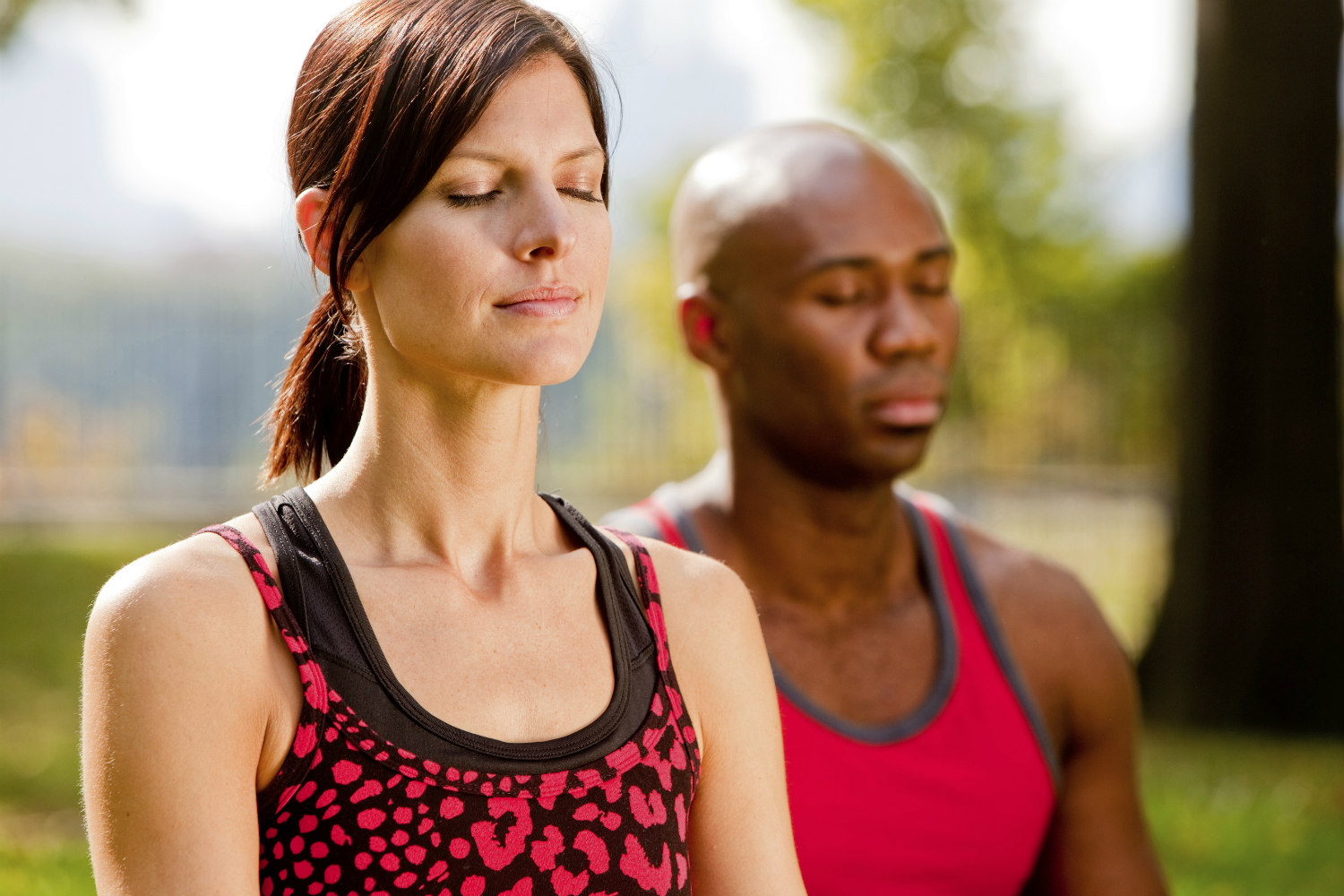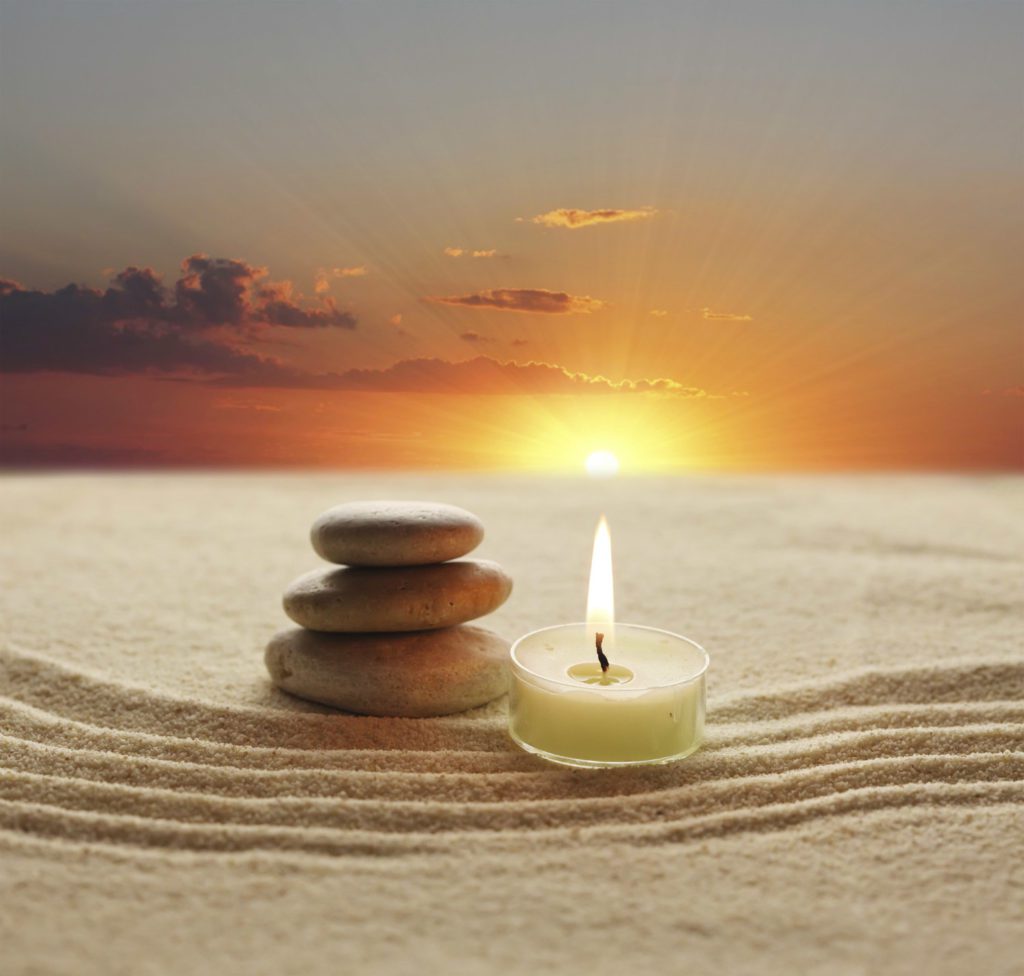Dhyana: The Seventh Limb of Yoga

By Nirmala Raniga
The Eight Limbs of Yoga are spiritual practices for well being, which help us live more peaceful and fulfilling lives. Each limb of Yoga explains how Yoga isn’t just a physical practice, but a way of life that helps us connect to our environment,our higher selves and those around us.
Our ongoing discussion of the Eight Limbs of Yoga brings us to Dhyana, the Seventh Limb, which is often translated as “worship”. Practicing Dhyana involves concentrating on a point of focus, with the intention of gaining truthfulness about it.
For example, we can focus on a candle flame, a vibration, a mantra, or any other object. And as we practice Dhyana by focusing our mind on a specific object, we can start to turn our senses inward to contemplate— and ultimately realize—our own divine nature, which is who we really are.
Since Dhyana is the state of deep concentration, it helps us practice meditation and bringing stillness to the mind. And while Dhyana is associated with meditation, it isn’t the same as meditation— rather, it’s a state of focused attention that helps us go beyond our mind and the reality we’re currently experiencing.
Through Dhyana, we can also distinguish between ourselves as a perceiver, that which is being perceived and our senses of perception. In this state, we can begin to see the world differently. That which we thought was real, can become not real at all. This experience happens effortlessly in its own time.
What is Dhyana?
In this way, Dhyana serves as a tool to help us see things clearly through meditation, free from illusion and distraction. There’s a unique point of consciousness that can occur between Dhyana and entering meditation, which is the glimpsing of the soul, or Atma Darshan. Atma
Darshan is like being “in the zone”, when you’re so immersed in an activity that time flies by. When we transcend time this way, we can experience a glimpse of our soul.
Atma Darshan is also known as slipping into the gap, or the space between our thoughts. When we’re in the gap, we literally don’t know we’re there. And once we consciously believe we’re in the gap, we’re not— because then we’re having a thought. The only way we can truly know if we’ve had this experience is by how we feel after meditation.
If time flew by while you sat in meditation, or you lost the sense of where you were, you may have slipped into the gap. However, the gap isn’t something we can seek. If we actively try to achieve this state, then we’re unable to quiet the thoughts that prevent us from entering into deeper meditation.
How Can Practicing Dhyana Help Those Who Are in Recovery?

Entering a unique, soul glimpsing state can also change our approach to life as we continue with daily activities. By turning off all thoughts completely can help us discover creative solutions to mind-boggling problems. A quiet mind can also help us identify what we’re holding onto that no longer serves us.
These profound realizations explain why meditation is fundamental for those who are on the path to recovery. When an addicted person begins to move away from harmful substances, all aspects of the person — mind, body and spirit— must be aligned to support his or her next steps.
By practicing Dhyana or meditation, and slipping into the gap, those who are struggling with addiction can gain increased awareness of their divine nature and who they really are.
With this increased self-awareness, many people struggling with addiction find they no longer need external sources— such as toxic substances or relationships— to feel complete. And this is when the body, mind and spirit become aligned to truly recover from addiction.
Although Dhyana is the Seventh Limb of Yoga, the Eight Limbs of Yoga aren’t sequential— they can be practiced in any order to help you achieve inner peace, self-realization and connection based on where you are in the present moment.
Let’s take mantra meditation, for example. During mantra meditation we practice several of the Eight Limbs of Yoga. As we meditate with our eyes closed, we practice breathing techniques known as Pranayama, or the Fourth Limb of Yoga. We also practice withdrawing our senses from external stimuli by engaging in Pratyahara, the Fifth Limb of Yoga.
As you can see, the Eight Limbs of Yoga are fluid and allow us to move freely through different states of being. By being aware of the Eight Limbs, staying committed to our practice and observing how our lives unfold, we’ll realize all that we need to know in perfect time.
The Eight Limbs help us see that spiritual experiences can’t be rushed to discover life’s answers, they can only be achieved through mindful awareness. If you’re not familiar with the other Limbs of Yoga that precede Dhyana, here are our previous blog posts that explain their benefits in detail:
Yama: The First Limb
Niyama: The Second Limb
Asana: The Third Limb
Pranayama: The Fourth Limb
Pratyahara: The Fifth Limb
Dharana: The Sixth Limb
